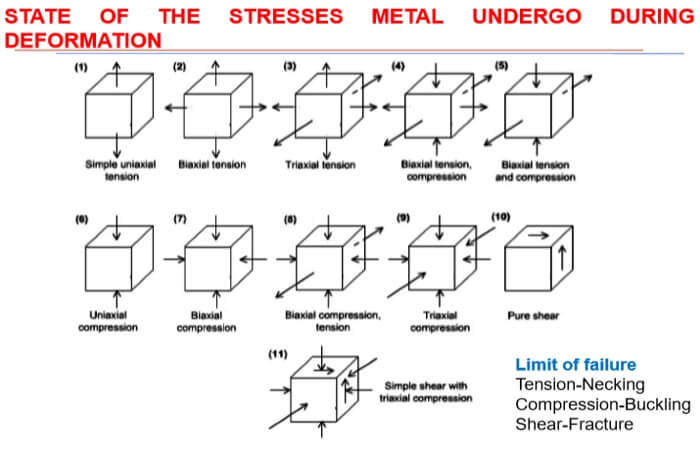To deform the metal permanently, the stress must exceed the elastic limit. At room temperature, the metal is in a more rigid state than when at higher temperature. Hot Working and Cold Working Metal Forming.
Thus, to deform the metal greater pressures are needed when it is in cold state than when in hot state
The amount of deformation that a metal can undergo at room temperature depends on its ductility. The higher the ductility of a metal, the more the deformation it can undergo.
Pure metals can withstand greater amount of deformation than metals having alloying elements, since alloying increases the tendency and rapidity of strain hardening.
Metals having large grains are more ductile than those having smaller grains.
HOT WORKING AND COLD WORKING
COLD WORKING
- Plastic deformation of metals below the recrystallization temperature is known as cold working. It is generally performed at room temperature.
- In some cases, slightly elevated temperatures may be used to provide increased ductility and reduced strength.
Advantages
- No heating is required
- Better surface finish is obtained
- Better dimensional control is achieved; therefore no secondary machining is generally needed.
- Products possess better reproducibility and interchangeablity.
- Better strength, fatigue, and wear properties of material.
- Contamination problems are almost negligible.
Principle : Under the application of external force the metal is plastically deformed to give it a required shape.
Why Forming
Selection of manufacturing process to produce a particular product is a depends up on number of variables namely material, shape, size, volume, and many other factors.
Ex. If material is brittle we cant opt for forming process, similarly all the materials are not Castable or Machinable so depending up on the material we are going to select the manufacturing process to convert the raw materials in to finished product.
Hot Working
- Plastic deformation of metal carried out at temperature above the recrystallization temperature, is called hot working.
- Under the action of heat and force, when the atoms of metal reach a certain higher energy level, the new crystals start forming. This is called recrystallization.
- When this happens, the old grain structure deformed by previously carried out mechanical working no longer exist, instead new crystals which are strain free are formed
Advantage
- Lesser forces are required for deformation.
- Greater ductility of material is available, and therefore more deformation is possible.
- Favourable grain size is obtained leading to better mechanical properties of material
- Equipment of lesser power is needed
- No residual stresses in the material.
Disadvantage
- Heat energy is needed
- Poor surface finish of material due to scaling of surface
- Poor accuracy and dimensional control of parts
- Poor reproducibility and interchangeability of parts
- Handling and maintaining of hot metal is difficult and troublesome.
- Lower life of tooling and equipment.
Applications
Hot forming processes, in general, are better suited to job production of parts.
- See More : Stirling Engines
- See More : Welding Process Gas and Arc
- See More : Types of Casting Process






